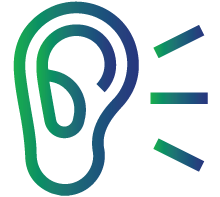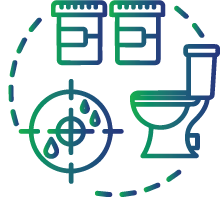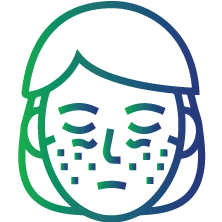
Extractable Nuclear Antigen (ENA) Profile Test
The Extractable Nuclear Antigen (ENA) profile test is used to aid in the diagnosis and monitoring of autoimmune disorders. Autoimmune disorders refer to diseases where the immune system of the body attacks its own tissues. The ENA profile focuses specifically on antibodies produced against nuclear antigens present within the cell nucleus. These antibodies, known as anti-ENA antibodies, are often linked to various autoimmune disorders.
The ENA profile typically comprises a panel of tests designed to detect specific antibodies, such as anti-Smith, anti-RNP, anti-SSA/Ro, anti-SSB/La, anti-Scl-70, and anti-Jo-1. These antibodies are commonly linked to diseases such as systemic lupus erythematosus (SLE), mixed connective tissue disease, etc. Thus, getting the ENA profile test done is recommended to prevent various immune-mediated complications.
Symptoms of autoimmune disease

Fever

Fatigue

Weight loss

Muscle or joint aches

Rashes

Recurrent sores

Hearing loss

Vision loss

Blood in urine

Abdominal pain

Cough

Numbness in different parts of the body

Chest pain

Changes in normal skin pattern
What is an ENA profile test used for?
ENA profile test is useful for assessing individuals who exhibit indications and symptoms of a connective tissue disorder and have a positive result in the antinuclear antibodies test. This test helps in the diagnosis of autoimmune diseases including:

Systemic lupus erythematosus (SLE)

Scleroderma (Skin)

Sjogren's syndrome (Exocrine glands)

Polymyositis and dermatomyositis (Muscle weakness)
Preparation for the test
No special preparation is required for the ENA profile test. Some medications may influence the outcome of the test. Therefore, it is crucial to inform your doctor about any medications you are currently using.
Interpretation of results
The result may come as positive or negative.
|
Antibodies |
Negative |
Positive |
|
SS-A/Ro ANTIBODIES, IgG |
<1.0 U |
≥1.0 U |
|
SS-B/La ANTIBODIES, IgG |
<1.0 U |
≥1.0 U |
|
Sm ANTIBODIES, IgG |
<1.0 U |
≥1.0 U |
|
RNP ANTIBODIES, IgG |
<1.0 U |
≥1.0 U |
|
Scl 70 ANTIBODIES, IgG |
<1.0 U |
≥1.0 U |
|
Jo 1 ANTIBODIES, IgG |
<1.0 U |
≥1.0 U |
Deviation from normal results indicates the following:
- SSA, SSB, SM, and RNP are extractable nuclear antigens (ENA) found in various connective tissue disorders such as Sjögren syndrome.
- Scl 70 antibodies are specific markers for scleroderma (systemic sclerosis) and can be identified in around 60% of individuals with this connective tissue disease.
- JO1 antibodies are specific markers for polymyositis.
FAQs
How is the sample collected for the ENA profile test?
A healthcare provider will draw a blood sample from a vein in your arm using a needle. The blood will be collected in a test tube or vial and sent to the lab for analysis.
What are the risks associated with the ENA profile test?
There are no known risks associated with this test. During a blood test, one may experience minor pain or bruising where the needle was inserted, but most symptoms will subside quickly.
What is the turnaround time (TAT) for the ENA profile test?
The ENA profile test result is usually available within 2 days after the sample collection. This duration may vary depending on the diagnostic clinic.
Can certain medications affect the ENA profile test results?
Certain medications, particularly immunosuppressive drugs, have the potential to impact the levels of ENA antibodies.
How does a qualitative ENA profile differ from a quantitative ENA profile?
A qualitative ENA profile provides information on the presence of antibodies in the blood, while a quantitative profile measures the quantity of antibodies. Quantitative results are valuable for evaluating disease activity and tracking the effectiveness of treatment.

